Auctions
$39 Million Klimt Leads Sotheby’s $280 Million London Impressionist and Modern Sale
Sotheby’s hits second highest London total ever with four new records set.

Photo: Sotheby's.
Sotheby’s hits second highest London total ever with four new records set.

Colin Gleadell

Sotheby’s roared ahead of rival Christie’s with an Impressionist and Modern art sale tonight that realized £178.6 million or $282 million including premium, comfortably within the pre-sale estimate of £140 million–203 million (Prices given include the buyer’s premium, estimates do not).
The total was just a shade behind the record £186.5 million for Sotheby’s equivalent sale in February.
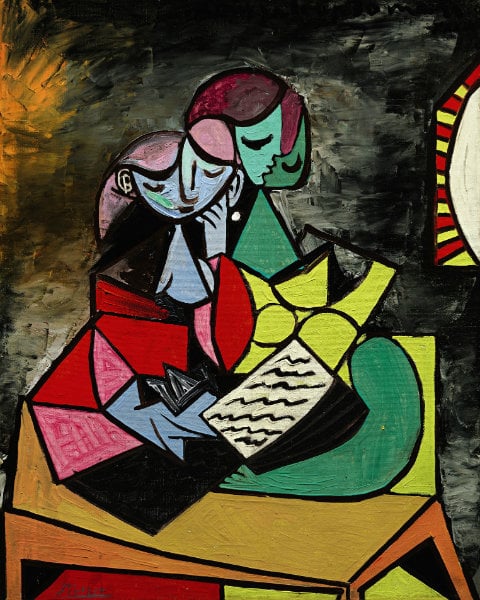
Pablo Picasso Deux personnages (La Lecture) (1934)
Photo: Sotheby’s
Leading the pack was a 1902 portrait of Gertrud Loew by Gustav Klimt, recently restituted from the Klimt Foundation in Austria, which saw a battle between a New York staffer on the phone and an unidentified woman in the room taking bids on a red cell phone.
The latter eventually won the duel at £24.8 million or $39 million, well above the £12 million–18 million estimate.
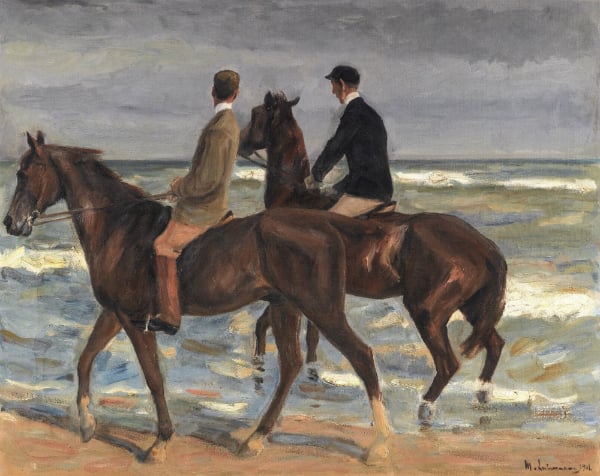
Max Liebermann Two riders on the beach to the left
Photo: Sotheby’s
Obviously there was speculation that Ronald Lauder was in the competition here, having paid top prices for restituted Klimts before, but no confirmation was forthcoming.
Other restituted paintings in the sale were a Max Liebermann of two horse riders on a beach, the first work claimed from the Cornelius Gurlitt hoard which sold for a triple estimate £1.87 million to an anonymous phone bidder who had to see off competition from dealers Daniella Luxembourg and Guy Morrison, and a classic suprematist painting, 18th Construction (1915) by Kazimir Malevich.
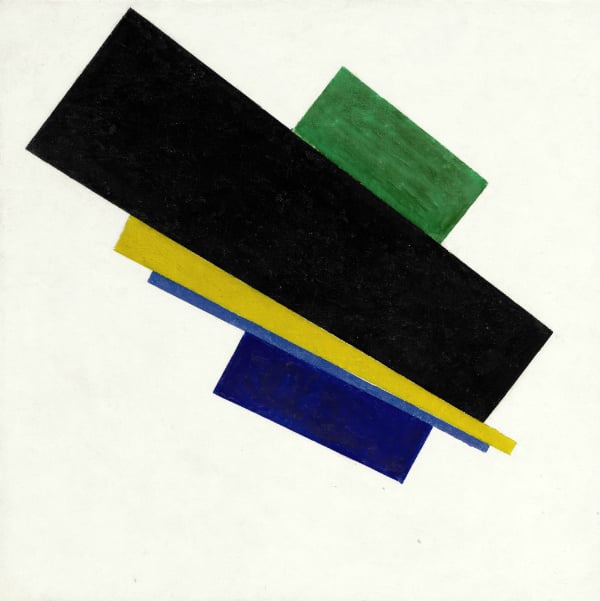
Kazimir Malevich Suprematism, 18th Construction (1915)
Photo: Sotheby’s
Concerns about fake Russian avant garde works have all but closed this market down, except where the provenance is completely watertight, as was the case with this painting which was in the artist’s collection when he died, transferred to the Stedelijk Museum in Amsterdam, and then claimed by the artist’s heirs when it travelled to New York for an exhibition at the Guggenheim. There are not many examples of Malevich’s abstractions at auction to base an estimate on, and this work was rated at £20 million–30 million—half the amount another suprematist composition sold for in 2008. Like that one, 18th Construction was guaranteed and sold without competition for £21.4 million.
The Malevich was one of eight lots guaranteed with irrevocable bids from third parties that carried a combined low estimate of £66 million and realized a combined £79 million including premium. The comparatively high level of guarantee for a London Impressionist sale was less a matter of policy than circumstance, said Melanie Clore, Chairperson of Sotheby’s Europe. But the comparison between this and Christie’s much smaller sale with a far lower value percentage of guaranteed lots was inescapable for those interested in how the two rivals are deploying their energies and resources.
The second major guaranteed lot was Édouard Manet’s study for The Bar at the Folies-Bergeres (1881), a much exhibited work, which might not be so valuable were it a study for a less iconic painting. In 1994 the study sold for £4.4 million, and now showed a respectable increase selling for £16.9 million, but on what appeared to be the irrevocable and only bid.
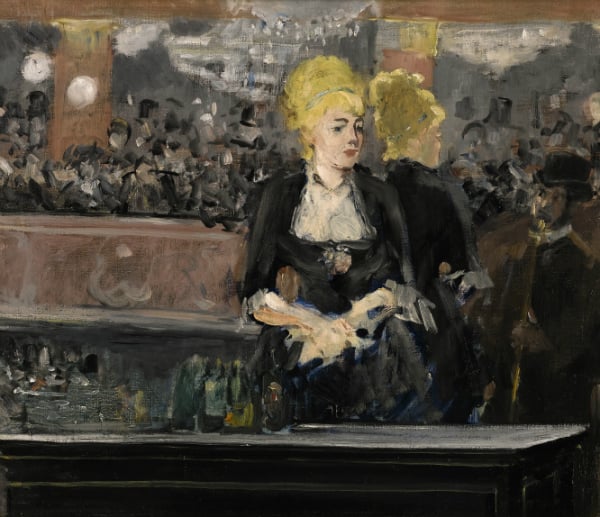
Edouard Manet Le bar aux Folies-Bergère (1881)
Photo: Sotheby’s
There was more competition for a third guaranteed lot, Edgar Degas’s fetching, posthumous bronze Petite danseuse de quatorze ans. One of over twenty casts, this example had been at auction twice recently—once in 2000 when it sold for £7.7 million, and again in 2011 at Christie’s New York when it was unsold with a punchy $25 million–35 million estimate. This time round it had a much-reduced £10/15 million ($15 million–23 million) estimate. Whether the third party bid, or took their share of the upside is not known, but bidding between dealer Daniella Luxembourg and the unidentified woman with a red cell phone boosted the price, selling to the latter for a record £15.8 million or $25 million—the hoped for price in 2011.
Another guaranteed work to excite competition was Henri Matisse’s small, sunny Femme a l’Ombrelle (1919), which sold to New York’s Acquavella Galleries for a double estimate £3.3 million. It was again a reasonable return for the seller who bought it in 1993 for £210,500.
Best return of the night, though, was for the private collector who bought a bronze bust of Auguste Rodin by Camille Claudel at auction in Brussels three years ago for €350,000 and watched it triple that price selling for £821,000 or €1.2 million.
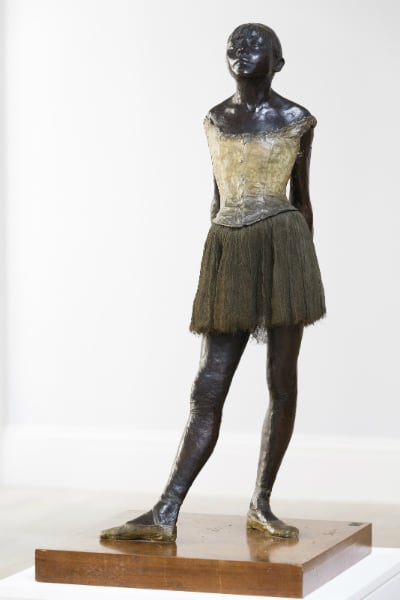
Edgar Degas, Petite Danseuse de quatorze ans
Executed in wax circa 1879-81 and cast in bronze from 1922.
Photo: Sotheby’s
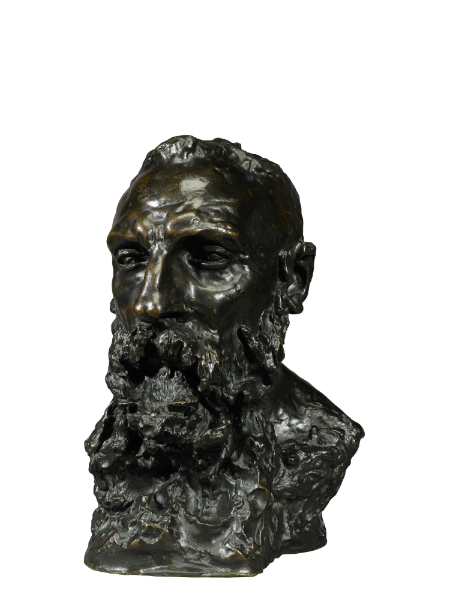
Camille Claudel Buste d’Auguste Rodin
Photo: Sotheby’s
Apart from the Degas sculpture, three other records were set. A watercolour by Lyonel Feininger sold for a double estimate £665,000; a 1948 watercolour of two seated women and a child by Henry Moore soared five times over estimate as determined bidding from UK advisor, Susannah Pollen, pushed the eventual phone buyer to £2.2 million; and a futuristic 1926 painting of a speeding train by Viennese artist, Erika Giovanna Klein, her first in a London sale, sold for £545,000.
Unsold was a heavy-handed Monet coastal view of Vetheuil in 1880, which could not get the $6.2 million back that it cost in 2010, and a sketchy 1905 painting of sailboats by André Derain—just not a great fauve painting that collectors want from that date—estimated at £2/3 million.
However, half the lots in the sale sold at hammer prices above their estimates, so it felt, and was much buzzier than Christie’s the night before—a better indication perhaps, of where this market is at.

Henry Moore Two women and child
Photo: Sotheby’s